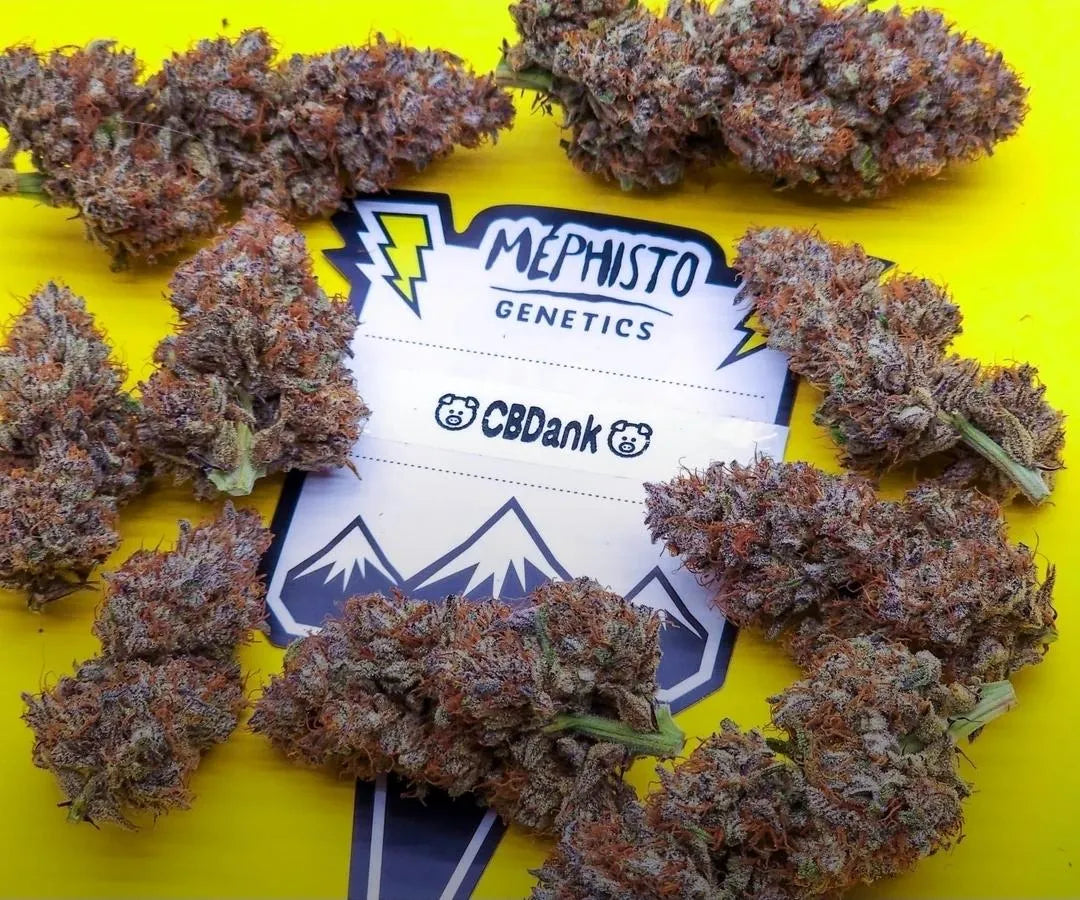As autoflower growers, it’s safe to say that we take a great deal of pride in our ever-growing seed collections. Whether it be a single pack or an entire library, these caches we’ve curated represent our tastes and preferences. They embody memories of our experiences with the plants they provided us and offer a promise for future possibilities. Although each seed's journey to our stash jar is a withdrawal from that bank, We recognize that as time passes, these collections of ours will inevitably grow. They become more than just an amalgamation of packs, but an investment. It’s imperative that these caches of autoflower seeds be well-kept in order to maintain viability over time.

Ideal Conditions for Seed Storage
Cannabis seeds need to be stored in a cool, dry, and dark place. Preferably airtight. This is because heat, moisture, and light all have an adverse effect on seed viability. Most importantly, seeds need to be kept under stable conditions, free from great swings or fluctuations in temperature, humidity, light, or air exchange.
The first line of defense for a collector is the packaging the seeds came in. A pack of Mephisto seeds will meet you halfway in this journey of keeping your genetics safe and viable. We safely pack centrifuge tubes into our light-proof and pliable packages. Storing your seeds in these packs eliminates having to worry about light degradation and humidity fluctuations. Even more, our packaging is color-coordinated by collection. This makes for easy sorting and organization.
The second line of defense for a collector is their collection vessel. This can be anywhere from a plastic storage tote, to a binder with card sleeves. While less important in preventing air, humidity, and light fluctuations than the seed package and vial themselves, these collection containers should still do their best to mitigate the risk of environmental contamination. There are lots of options out there, and we will cover a few below as we cover storage methods.

Three Seed Storage Methods
When choosing where and how you’ll store your seed collections, the most important thing to consider is the frequency of which you’ll be accessing your packs. The most detrimental aspect of any swing in temperature or humidity to your seed packs is the swing itself. With this in mind, we recommend three different storage methods, each one best suited for particular frequencies of use.
Shelf Storage
For seed packs/collections that you plan to open and use in the short term, storing them on the shelf of an area that maintains a livable climate will suffice. Room temperature and humidity conditions often fluctuate, and this will vary greatly depending on where in the world you live. Nevertheless, conditions suitable for habitation will not adversely affect the seeds as they are store within their vials and packs. Your advantage of shelf storage is that these seeds are ready to plant right out of the pack and will need no additional time to acclimatize.
Closets, pantries, and cabinets are all great places to shelf-store your seed collection containers. They are dark, often cooler, and can protect your seeds from fluctuations that a typical room may undergo in any given period of time. Garages and detached units, even unfinished basements or spaces in your vicinity that are protected from the elements of the outdoors but not environmentally controlled may be too risky for housing seed collections.
If you are in a high humidity area, or an area with frequent fluctuations, using a desiccant pack inside of your seed collection storage container will help to prevent an unwanted microclimate from developing.
If you are not planning to use your seeds in the short term, say within a few months, there are better options out there for ensuring seed viability. Shelf storage is perfectly fine for keeping packs you intend to access within that time frame so long as you are storing your collection in an environmentally regulated cool, dark, and dry place.
Refrigerator Storage
Hands down, the best all-around option for keeping your seed collection safe for mid to long-term storage is to stow them inside of your refrigerator. At 35-38 degrees Fahrenheit (1.7-3.3c), these conditions are ideal for maintaining viability long term. Stored inside of their packages, and within a collection container, you should be able to safely keep your seeds in a perpetually powered refrigerator for years. As with shelf storage, a desiccant pack is a great additional layer of protection you may want to use, especially for long-term storage.
You should try to access your refrigerator-stored seed collections as infrequently as possible and consider removing packs in batches as you use them. Every single time the collection leaves the refrigerator and gets opened, it becomes exposed to the elements. If done once or twice in a given few month period (I.e between runs), you should have less risk. However, frequent pulls will lead to problems with germination down the road. A hidden demon in this process is not knowing how these actions will impact viability until it's too late. This is why shelf storage is always the superior option for storing packs you intend to use within a few months.
Refrigerators themselves can vary both in temperature settings as well as with their interior microclimates. This will be one of those ‘know-your-fridge’ situations. Try to store your collection in a spot that isn’t known to freeze over. Make sure that you are also checking your storage containers for freezer burn or condensation. These are signs that fluctuations may be occurring or that these is a compromise in your container.
When removing seeds from the refrigerator for use, you will need to let the pack sit at room temperature unopened for a few hours to acclimatize. Opening a pack fresh out of the fridge will force the air in packs and vials to evacuate, replacing it with unwanted moisture. Opening a cold pack of seeds can be the biggest culprit in viability loss. After a few hours on the shelf at room temperature, your seed pack should be ready to open with much less risk of contamination.
Freezer Storage
In almost all cases, it is not recommended to store seeds in the freezer. When seeds that have any kind of moisture within them freeze, that moisture expands and can destroy vital tissue. This process will render a seed inviable. Nevertheless, there are situations where safely stored seeds in the freezer can survive long periods of time. This option should only be practiced in the context of keeping seeds stowed for multiple years at a time between thaws.
Make sure your seeds are completely dried, and stored in an airtight container. A great option for this is to vacuum seal your seeds ahead of time. This can prevent moisture buildup and help keep your seeds safe for longer. Once the collection is in the freezer, it's best to keep them in there unbothered. The most turbulent fluctuation for a seed to make is from being frozen to being at room temperature. When removing seeds from frozen storage, try tapering the thaw by placing your frozen seeds in the refrigerator for a day before placing them on the counter to thaw for a few hours. Remember to wait until your packs are fully acclimatized before opening them.
In short, keep your seed collections free of fluctuations in heat, light, and moisture for your best chance of keeping them viable for longer. If you plan on opening your seed packs within a few weeks to months, it's perfectly safe to keep your collection on the shelf. Anything over that and the fridge is your best bet. Only utilize the freezer for backups and long term storage. Always acclimatize cold seed packs before opening them and finally, the more you open your packs, the more risk you introduce for contamination.
In Part 2, we will discuss best practices for labeling and organizing your seed collection!
Jimbo, signing out!
related blogs.
Check out these other blog articles.










